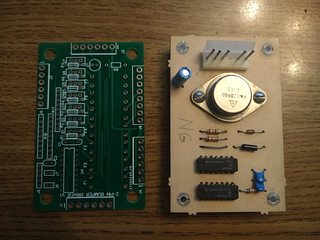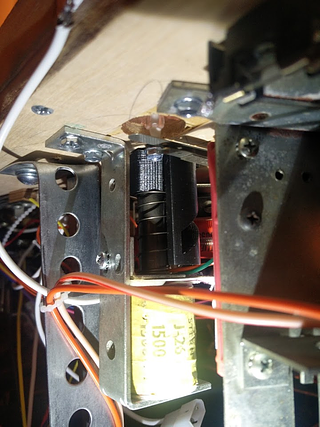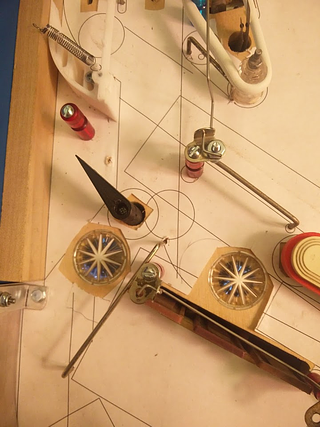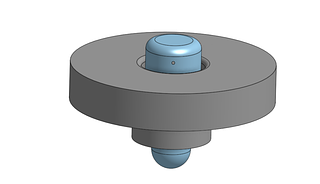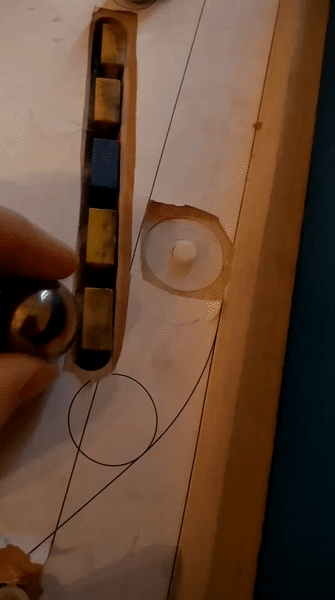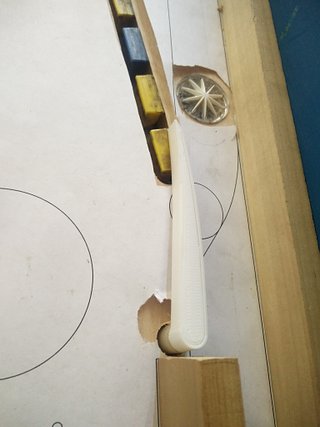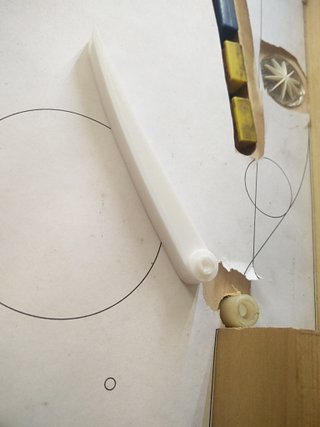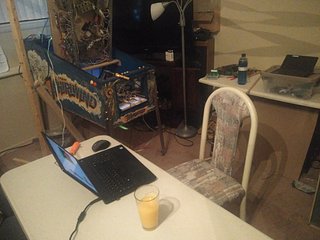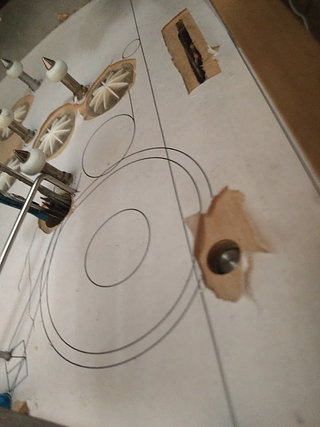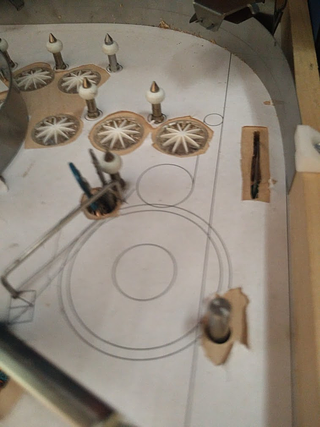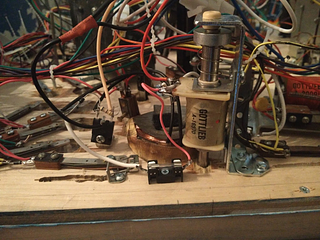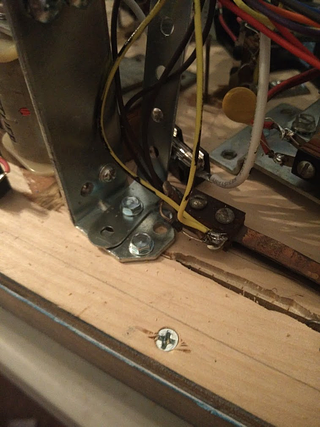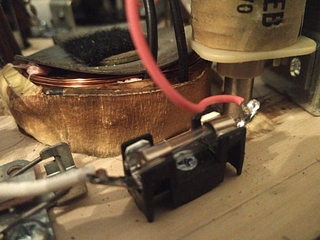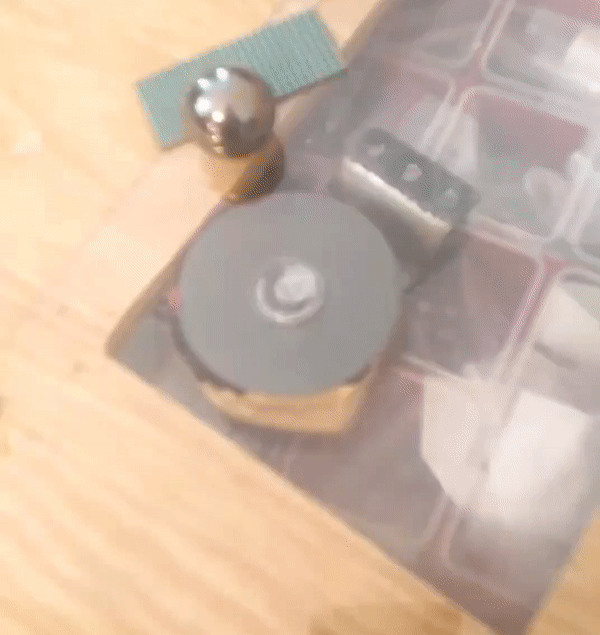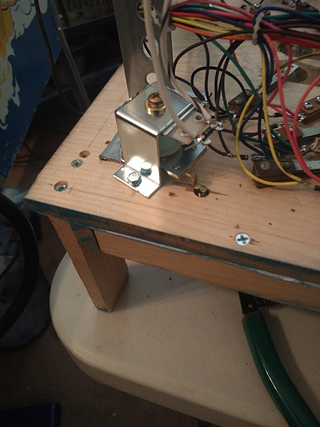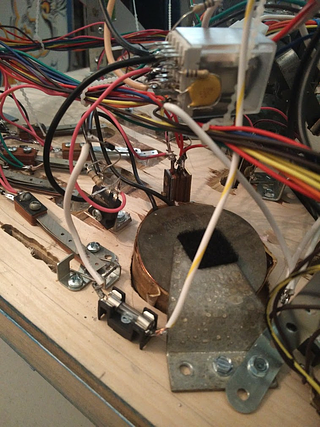Lots of playtesting happening while I try to figure out what direction to take the code in. I've gotten a few others besides myself to playtest, such as my old college roommate who dropped by for dinner one day: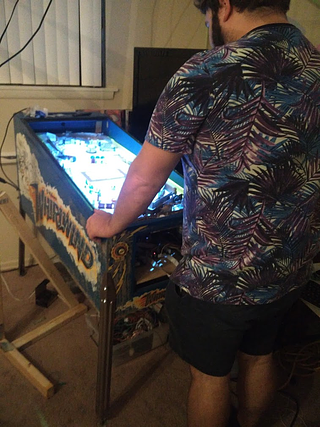
He's not a pinball player, and has probably played 20 games of pinball in his whole life, so it was interesting comparing how he played it with how other, regular pinball players did. Another interesting difference though, is that he knows how to play poker, vs another playtester who plays pinball a lot, but doesn't know poker too well. One person trying to actually play poker hands, go for good hands, etc even though their accuracy and control were minimal while another mostly ignored the hands. I need to make sure that the game is fun for both types of players.
Watching people play has also given me more chance to actually watch how the game physically plays and I've noticed some areas I don't like:
The right inlane/outlane area was giving way too many inlanes vs outlanes. The metal wall on the side of the slingshot to smooth the orbit feed doesn't help either, as it's effectively making the inlane even wider. I thought from my initial design that it'd be very outlane heavy but either the wood outlane wall is bouncier than I expected, or the angle the ball tends to come in just is leading to that sort of path... I added a mini post with a small rubber right above the inlane guide, which seems to help a bit:
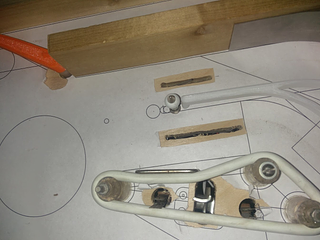
My ability to place the post is a bit limited since I need to make sure not to interfere with the orbit feed from the diverter, so I couldn't really place it much higher, or any more to the left (which I wanted to do to make the outlane 'wider')
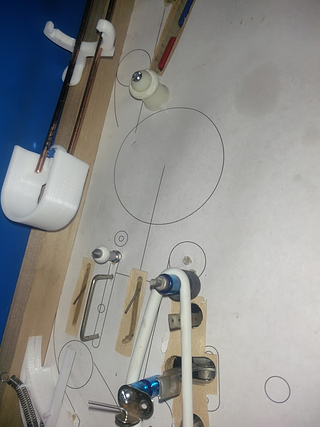
The left outlane had similar issues. The ball was going down the inlane much too often, and again I couldn't really change the size of the inlane that much since it's also the left orbit return feed. So I needed to play with the outlane instead. I started by swapping the left slingshot post from a star post to a thinner post, but that didn't have much effect. So I started moving the post down+right, keeping the front 'face' of the slingshot the same since I still need to keep it aligned with the switches. It's now down as far as it can go without touching the upper switch, which also required dropping from a 2.5" rubber to a 2" rubber. Still, the ball tended not to go down the outlane that much. I also added an old data east half post rubber to it, since I've found these tend to have a deadening affect on the posts, but it didn't really have a noticeable affect.
I also noticed that the magna save wasn't getting used. At all. Whenever the ball came over to this area, it'd either be down the outlane or inlane instantly; there was no time for nudging or reacting, let alone using the magnet. Eventually I'll probably move the magnet lower, since the slingshot has gotten so much shorter, though I don't think that will help the speed issue that much. I'm not sure if the issue is just that the game is too fast, or if the geometry is also having an effect. I added a mini post in this outlane too, again being careful to not affect the orbit feed while moving it as far to the left as possible, and also added a post above the magnet. I'm hoping that this will cause the ball to bounce off the posts more, leaving it in range for the magnet to be used. This whole area is a bit cramped... I wish I had had a widebody cabinet to use instead of a standard width, mainly for this left side. The feed down the left wall could really use another inch or so to play with, but oh well.
Playing with posts like this is a bit nerve-wracking. I can picture there being a lot of minor adjustments I'd like to do, but once you put a post in one place, you can't put another too close or the holes will interfere with each other. Right now I'm 'testing' by holding the post upside down so the rubber is at the proper height while trying to roll the ball through in all kinds of directions to see how it plays, which is working okay, but you can't really do any advanced testing. Most commercial games have slots for the posts to be moved through, but that is still only one axis, and those slots are difficulty to cut by hand. I'm almost tempted to make a custom little assembly with large washers above and below the playfield, so you can then just drill like a 3/8" hole in the playfield and position your post anywhere in there...

The lower/mini playfield entrance is also giving me issues. The ball tends to rattle a lot more than I expected coming down the outlane, so sometimes the ball is going the wrong way when the post is down. Sometimes the down post and its hole cause the ball to do weird things too, since the post hole is in the path of the ball (which I've learned from owning a Jurassic Park is something to avoid at all costs...).
I'd REALLY like to have a little diverter gate here instead of a post, but the area I have to work with is extremely limited. I picked up a Stargate recently, and saw that they had a really cool diverter mech in their outlane. It's a rotating gate, but it operates via an up-down post mech, with a spiral path around the plunger, so the gate/plunger is forced to rotate as it moves up and down. I bet that mech would work perfectly, if I could somehow find one to use, but I've only ever seen it in Stargate. Maybe I can fabricate one with my 3D printer...
I'm also going to play with the post to the upper right, try to move it down and to the left as far as possible in order to guide the ball more towards the mini playfield entrance. I can't move it too far though without blocking the outlane drain path, and I need the one way gate on the inlane to still work, so this may end up being a custom shaped 3D printed post?
The star rollover on the left got positioned too far to the left, so it's possible for the ball to roll down the guide smoothly and not trigger it. I can't really move the rollover though without cutting a new playfield or something. Multiple playtesters commented that the ball feeds to the lower flipper very fast; you need a very quick reaction to flip in time once you realize the ball is going to the mini playfield instead of draining. So I may try to reshape the guide here in to try and slow the ball down and force it to go over the rollover as well.
One last area of minor concern:
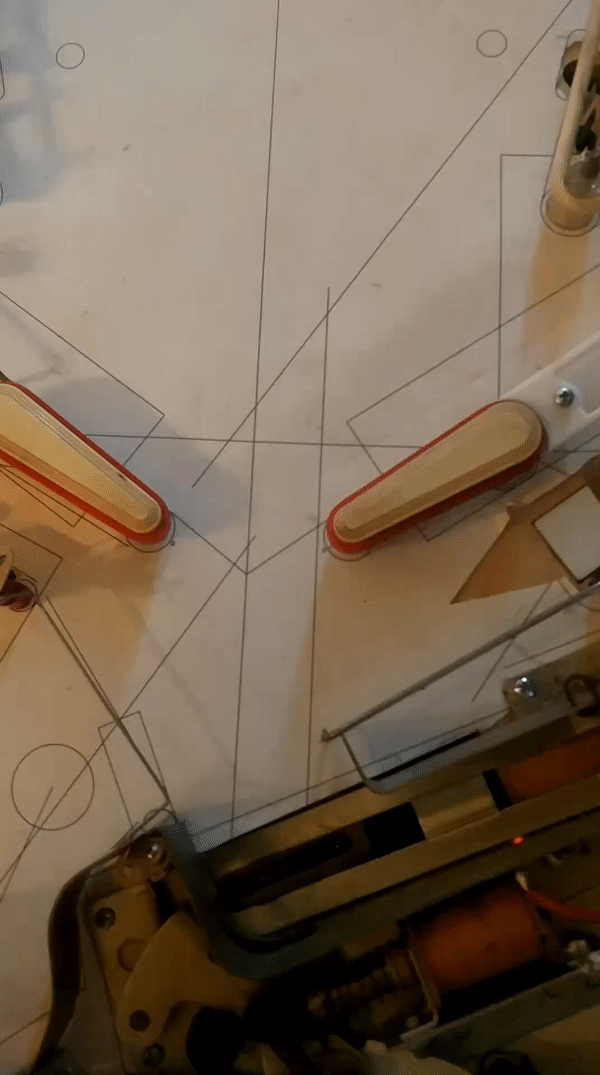
Occasionally a fast right outlane drain will self-lazarus off the mini playfield exit gate. It's not too often, so I'm not that concerned, but I'd rather it didn't happen. Usually games have 'biff bars' (or whatever the official term is) to prevent this, but since I actually want balls to be savable from the mini playfield flipper, I can't have one here. Don't really have any ideas on how to prevent this
 Another lingering problem I've been having is with the slingshots and pop bumper. Originally I was going to control them through the driver boards like everything else, but I realized I'd be able to use 2 boards instead of 3 if I powered them separately. So I figured I'd just drive them with Gottlieb pop bumper driver boards. I had some spares, and they're purpose built for this purpose. But for some reason I can't seem to get them to work well. Unless I gap the switches incredibly wide, the boards will rapid fire. So after a lot of fighting with that I decided that I could make a better pop bumper driver board!
Another lingering problem I've been having is with the slingshots and pop bumper. Originally I was going to control them through the driver boards like everything else, but I realized I'd be able to use 2 boards instead of 3 if I powered them separately. So I figured I'd just drive them with Gottlieb pop bumper driver boards. I had some spares, and they're purpose built for this purpose. But for some reason I can't seem to get them to work well. Unless I gap the switches incredibly wide, the boards will rapid fire. So after a lot of fighting with that I decided that I could make a better pop bumper driver board! 